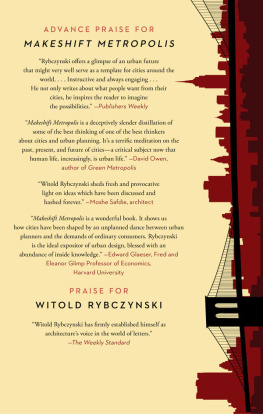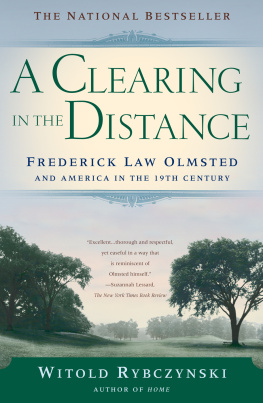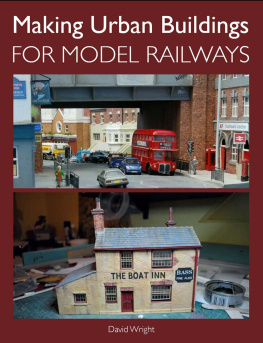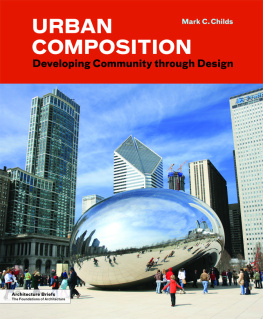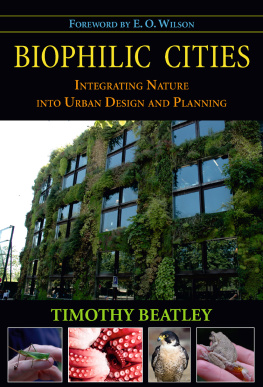Contents
Guide

The author and publisher have provided this e-book to you for your personal use only. You may not make this e-book publicly available in any way. Copyright infringement is against the law. If you believe the copy of this e-book you are reading infringes on the authors copyright, please notify the publisher at: us.macmillanusa.com/piracy.
To Shirley
Most of us dont attach much importance to the mundane architectural settings of our everyday lives. We go in and out of supermarkets, fast-food restaurants, and gas stations without a second thought, perhaps because we understand these places so well that they seem merely a part of our natural surroundings. Its necessary to think back to childhood to recall what it was like when such ordinary places were new and strange. I remember my first schoolroom, with its imposing hierarchy of many little desks and one big, important desk. Or the first time I was taken to a museum, with its succession of large, silent rooms filled with labeled glass cases. Or the first, truly strange experience of a movie theater: sitting alonein a crowdin the dark. As children, we unravel these unknown, exotic places like anthropologists in a new world, without the encumbrance of foreknowledge. We are obliged to decipher for ourselves the meanings of each new place, and to find our own place in it.
As adults, we feel more or less at home more or less everywhere. This is not just a question of habit. I dont mean that there arent locales that appear exotic, but its rare that we find ourselves in places that are truly incomprehensible. This is not just because buildings fall into recognizable types (a concert hall designed by Frank Gehry is still a concert hall; the relationship between performers and audience follows a well-understood convention) but also because television and movies have brought us in contact with so many places we would never ordinarily visit: prisons, morgues, missile silos. Last summer, I toured a World War II submarine moored alongside San Franciscos Fishermans Wharf; it was the first time I had ever been aboard such a vessel, but thanks to Lloyd Bridges and Sea Hunt as well as many submarine movies, the confined mechanical interior of the USS Pampanito felt, if not exactly familiar, at least not unfamiliar. Similarly, when I was obliged to go to a hospital, a place I had not been in for thirty years but had seen innumerable times on television, the layout of the long corridors flanked by dreary wards, and the curious hospital atmosphere that combines boredom and urgency, personal attention and impersonal neglect, felt normal, and I think I would have been surprised had it been otherwise.
So, I didnt expect to come upon a new kind of place, that is, a place that demanded unknown rules of behavior, not twenty miles from my house, and certainly not in a shopping mall. This encounter happened in the 1970s. I was walking through the mall, which had recently opened, when I came upon a large, open area with many tables at which people sat eating. There were no waiters visible, and the food appeared to come from a series of take-out counters where young people served food that could be taken away on trays, cafeteria-style. The counters were located on the periphery of the open area, and to judge from the colorful overhead signs, there was a choice of different kinds of food: Chinese, Tex-Mex, pizza, southern fried chicken. I lined up at one of the counters, ordered my food, paid, and then, holding my loaded tray, I realized that I wasnt sure what to do next. I had been in fast-food restaurants before, of course, but this was different. Here, the tables all looked the same. I wasnt sure if I was expected to sit opposite the kiosk where I had just picked up my souvlaki and Coke, or anywhere at all.
I had stumbled on a food court. (The name was then unfamiliar to me, which was one of the sources of my confusion; knowing the name of a space is a big part of learning to recognize and use it.) The food court is an unusual eating place. A conventional restaurant is a highly stylized environment; we are called customers, but as the hostess shows us to our table, we really feel like guests in someone elses house. The atmosphere of a cafeteria, on the other hand, is different: uniform, regimented like an industrial assembly line, reflecting its mess-hall and refectory roots. The experience of a food court is neither of these. It feels neither domestic nor institutional. Because its not clearly set apart from the surrounding mall and the crowds of strolling shoppers, it has something of the feel of the sidewalk caf, except that there are no waiters and no need to buy anything. In a sense, its like picnicking on a park bench.
I must confess that few of my architect friends share my interest in food courts. If they notice them at all, they find them commercial, lowbrow, beneath contempt. (One exception is the Toronto architect Jack Diamond, who based the design of the dining space of the student center of York University on a food court.) Those of us who find food courts, drive-in banks, and shopping malls worth a second glance owe a debt to the writing and teaching of John Brinckerhoff Jackson, who, for the last half century, has been drawing our attention to such neglected places. I have wanted people to become familiar with the contemporary American landscape and recognize its extraordinary complexity and beauty, he writes.
* * *
When Jackson uses the word landscape, he is referring not only to the natural countryside but to the man-made landscape, and not only to parks and gardens but to the full range of man-made environments: highways and roads, towns and neighborhoods, public buildings and houses. Now, all these categories of place, taken separately, are the objects of study of different specialists: agriculturalists, landscape architects, highway engineers, urbanists, and architectural historians. What distinguishes a landscape historian like Jackson is that he considers man-made surroundings not as works of art or engineering or economic necessity but as social artifacts, that is, as evocative backgrounds for human activities.
Jackson taught the history of the American landscape at Harvard University and the University of California, Berkeley, for many years, and his writing appeared monthly in the magazine Landscape , which he founded and edited from 1951 to 1968. Several collections of his essays have appeared in print: Landscapes , The Necessity for Ruins , and Discovering the Vernacular Landscape . Retired from teaching for the last decade, the indefatigable octogenarian has continued to observe the contemporary landscape in its large and small manifestations: national parks and backyards, Pueblo villages and mobile-home parks, country roads and suburban driveways. And he writes bracingly about all of these, and more, in his latest book, A Sense of Place, a Sense of Time .
A Sense of Place, a Sense of Time is a collection of fourteen essays, arranged in three major sections, covering roughly the Southwest (Jackson lives in New Mexico), the natural landscape (parks and gardens), and the landscape created by the automobile. This arrangement sounds quirky, but it allows the author to explore both large subjects in detail and detailed subjects in a larger setting. He writes evocatively about the prehistoric dwellings of the Pueblo peoples, for example, reminding us how conceptions of space and time are determined by culture. Unlike European-American buildings, which are conceived as a single unit subdivided into multiple rooms, Pueblo architecture is made by clustering individual rooms, usually in a stepped-back fashion, to produce the characteristic rambling buildings that resemble piles of childrens toy blocks and that can still be seen in towns like Taos, New Mexico. Curiously, in view of this approach to building, the Hopi language contains no word for room. Jackson speculates that this is because the Hopi conception of space is different from our own:


